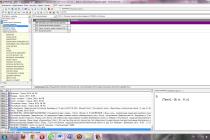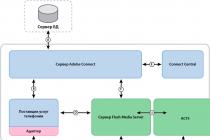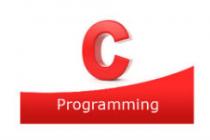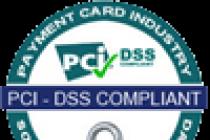Microsoft is ending support for Windows XP and Office 2003 altogether. Customers who are still using computers running Windows XP will receive notifications that support for their system has ended.
The Windows XP operating system appeared on the market more than 12 years ago. This is the first operating system that has survived in its working order for so long. If you think about it, the fact is surprising, because most of the events of that time are already perceived by us as ancient history especially in an industry like information technology.
Naturally, the Internet community could not ignore this event, so I propose to look at what we were like 13 years ago.
Today, among all versions of Windows, XP takes the honorable 2nd place. More specifically, 27.69% of all Internet users in the world still use Windows XP, including more than 50% of users in China.
(according to Net Market Share data)
Why did Microsoft decide to end support for the popular Windows XP?
As much as the fans of XP would like it, but today it already does not fit well into our realities, and its support, I suppose, distracts a lot of time and effort. This explains why Microsoft is actively promoting the transition to new versions of Windows. One of the reasons is financial, but I do not consider it the main one, so I will offer five more key reasons.
Five reasons to ditch Windows XP
1. The impossibility of full use of modern "hardware".
Windows XP was developed at a time when computers were weaker than today's budget smartphones. Let's remember the system Windows requirements XP. Processor with a frequency of 233 megahertz, 64 megabytes random access memory and 1.5 gigabytes of hard disk space. XP was tuned for older computers and simply is not able to take full advantage of modern hardware.
2. Compatibility issues.
Already now I am faced with the fact that under Windows XP there are no drivers for many modern devices, it is logical to expect that after the end of support, the situation will only get worse. Not immediately, but over time, software and driver manufacturers will not want to support an outdated system and will leave XP users without their products.
3. Limited performance
Despite the fact that XP consumes fewer resources, on modern computers, newer versions from Microsoft allow you to achieve better system performance. Recording information on HDD, copying or, for example, unpacking the archive will take much less time on modern hardware under Windows 7 or "eight" than under XP.
4. Outdated design
Windows XP is outdated not only morally, but also externally. The appearance of the system was developed with an eye to the power of computers thirteen years ago. Beautiful animation and other effects were considered too resource-intensive in those days. Moment controversial, for an amateur, but using the same "seven" is not an example more pleasant.
5. Threats information security
At the time of the release of Windows XP, the attitude to system security was completely different, and what seems natural today, then simply did not occur to developers. The attitude to the vulnerability of the system was more frivolous than it is now. Here's a table of threats then and today.
Over the past 13 years, the concept of system protection has changed significantly. New technologies have appeared, already at the very early stage of preparation, algorithms and code undergo special checks, systems are assessed for resistance to penetration from the outside. Windows XP was developed a long time ago, and its development did not pay as much attention to the security of the system kernel as is required now.
Risks of continued use of Windows XP SP3 and Office 2003
Windows XP will not stop working. You can keep using XP on and on, but be prepared to take risks.
1. Safety: using software without official support, you will not be able to receive security updates and other important fixes. In other words, Microsoft stops patching unpatched XP vulnerabilities. This effectively means that your computer will be more vulnerable to cyberattacks. Windows XP will be like a target in a dash.
2. Reducing support from hardware manufacturers and software vendors: inability to use new equipment (modems, printers, various devices information input / output) and various software (programs, new computer games etc). Manufacturers of software and hardware have already started dropping support for Windows XP. We'll have to stay with outdated, insecure versions.
So far, not everything is so bad, in particular, with regard to the developers of antivirus software. Many vendors have stated that they have no specific plans to end support for their Windows XP products and will continue to support them for at least the next two years. So AVG, Avast, Bullguard, Check Point / ZoneAlarm, Comodo, Fortinet, F-Secure, Ikarus, K7 Computing, McAfee, Microworld, Panda Security, Quickheal, Tencent - all of these products will at least be supported for XP for another 2 years ...
ESET announced that its ESET NOD32 antivirus solutions will support Windows XP at least until the end of April 2017. Kaspersky Lab will continue to support it until 2018 (2016 for corporate solutions).
What to do for those who, for one reason or another, cannot or do not want to abandon Windows XP and switch to newer operating systems:
1. Set up a regular backup the most valuable data on your computer.
2. Make sure your Windows XP has all existing updates, that is, all updates up to April 8, 2014 must be applied.
3. Keep all software up to date. Make sure to use latest versions Adobe Flash, Adobe reader, Java, Microsoft Office, your web browser, etc.
4. For those who do not access the network from a computer to Windows based XP, disconnect your internet connection.
5. Make sure you have up-to-date antivirus software installed and regularly updated on your computer.
At one time it was very good system which met all the requirements of the time and gave users a very good level of performance, reliability and comfort. But her time has passed, technology has gone far ahead. Keeping this system on the market will do more harm than good. Let's say thanks to her, but she needs to be abandoned, moving to more modern solutions.
By the way, soon, perhaps in May, my video course will be released completely devoted to the installation of the operating room. Windows systems... I know that most of the users stay on Windows XP due to the fear of installing the operating system itself. Many would be happy to move, but remain hostages due to their own fears and many questions related to the installation of Windows. For example such as: which version and bitness Windows choose where to download the original windows image how to write it down, how to boot from a disk or flash drive, how to activate Windows? Of course, there are a lot of questions. I promise you will get answers to all these questions in this video course.
Microsoft issued a notice to XP users announcing the end of support for the system. Fortunately, nothing prevented you from turning off these notifications.
Windows XP will still live on computers of companies, government organizations, banks and other structures that have high inertia and cannot update equipment overnight, but nothing prevents home users from migrating to more modern versions. And there are more than enough such users, since the share of XP at the beginning of April was almost 28%. What options do they have now?
Interestingly, the date in the message is incorrect ...
Switch to a newer version of Windows
Perhaps this is the easiest way to keep up with modern realities. However, some Windows XP computers may not meet the minimum system requirements available with Windows 7 or Windows 8.1. Check the hardware capabilities of your PC and the requirements of the installed system.

Upgrading to Windows 7 Professional brings one benefit to businesses running their own applications designed for Windows XP, which is especially important for small businesses. Windows 7 Pro includes XP Mode that launches virtual machine with Windows XP on a Windows 7 computer, allowing users to use legacy applications in new system(Windows 8 does not have this mode). However, with the end of support for Windows XP, Microsoft advises using Windows XP compatibility mode only if your computer is disconnected from the Internet.
Many enterprises have delayed upgrading their computers due to the high cost of upgrading business-critical applications. XP Mode is not a practical long-term solution to avoid the transition to new standards, but it will at least smooth out the complexity of such a transition.
Buying a new PC with new Windows
From the moment the emergence of Windows XP Microsoft released three more versions of the operating system (Vista, 7 and 8), which gives us some idea of how much the world has changed since then. The performance of computers has grown significantly since the beginning of sales of systems with pre-installed XP.

Therefore, now is the right time to consider buying a new computer. Naturally, Microsoft would like you to buy Windows 8.1, as well as an all-in-one computer with a large touch screen and other "bells and whistles" about which old computer on XP could not even dream of.
Also available on April 8, Windows 8.1 Updated brings even more features to make life easier for keyboard and mouse users. Perhaps now the process of adapting to the new OS will not be so traumatic for those who prefer to work on a PC in their usual ways.
Try something new
You can take advantage of this opportunity and switch to one of the new platforms that have nothing to do with Windows. The past decade has seen a shift in how we use devices, moving away from the shackles of the desktop to more mobile solutions.
Among the available options are computers running OS X, iPad tablets and Android; Samsung strives to offer its own solutions for professional use by working on the KNOX platform on Android and releasing Galaxy tablets Pro. Those who prefer more familiar form factors can look towards Chromebooks on Google's Chrome system. They cost from $ 200, but before you buy, try to work with them, because not everyone will like the cut-down functionality.
Stay on Windows XP

If you are not afraid of viruses and hackers, you can simply stay on Windows XP indefinitely. Microsoft will continue to offer basic Windows XP security protection through the Security Essentials suite and the Malicious Software Removal Tool; both will continue to be updated until July 14, 2015. But the more fundamental protection in the form of system vulnerabilities is a thing of the past once and for all, opening computers to incessant attacks.
Yesterday I visited the new Microsoft Technology Center for a kind of "funeral" for Windows XP.
Today, April 8, 2014, support for Windows XP and Office 2003 ended. In fact, this means that Microsoft is no longer providing technical advice on these products, updating technical documentation on them, and ceasing to release updates for them. Of course, XP and Office 2003 can continue to be used, and you can even reinstall them, but they will not be updated (more precisely, they will be updated with all the updates that have been released until today).
According to the results of the TelecomDaily study, almost 42% of workstations operate on Windows XP today in Russian organizations.
Only 46.5% of those currently using Windows XP intend to upgrade to newer versions of Windows.
Of those who are going to switch to a new version of Windows, only 35.6% are ready to do so this year.
It would seem that the support is over and okay. The system works fine and you can continue to use it (which I do to this day). However, there are several aspects that I have not thought about.
Inevitably, more and more vulnerabilities are found in the system. In 2014, five such vulnerabilities were discovered in Windows XP. It might seem a little, but each of them may be enough to infect the system.
As you know, hackers study each new security update in order to exploit the vulnerability it closes on systems where this update has not been installed. Some of the code for Windows XP and newer versions of Windows is the same, so there is a danger that new updates for Windows 7 and 8 will inform cybercriminals about new vulnerabilities in Windows XP.
New versions of Windows have brought many new security technologies.
The vulnerability of systems with all the latest updates was tested against 184 exploits. Windows XP SP3 was able to defeat almost all exploits. EMET helped reduce the number of dangerous exploits to 21, with Windows 7 missing only ten.
Resistant to infection across browsers.
Alas, the likelihood of a virus infecting a computer under Windows control XP is 6 times that of Windows 8.
As you know, Windows XP is used in the vast majority of ATMs. Those of them who work on Windows XP embedded are more fortunate - its support has been extended until 2016. Of course, there is no browser and ATMs work with banks via VPN, so the likelihood of infection is much lower, but it still exists.
I asked the Microsoft representatives whether it would be possible to install updates for Windows XP embedded on regular Windows XP. They replied that it would not work.
And all organizations that accept payments by plastic cards will now have to leave Windows XP, since the international standard Payment Card Industry DSS requires a monthly update of the operating system, and in Windows XP this is now impossible.
I still use Windows XP and had no intention of changing it to something else in the foreseeable future, but yesterday, when I heard about all these problems, I thought hard.
p.s. If you haven't seen it yet, watch the sad video in the previous post.
From now on, there will be no more "security patches" for XP, so it is possible that attackers will release a swarm of exploiting holes that.
"The hackers must have been holding on to some kind of exploit in anticipation of the end of support," said Chris Sherman, an analyst at Forrester Research. "Having discovered any new vulnerabilities, they most likely were in no hurry to exploit them ahead of time."
Attackers can also look at the new security updates for Windows Vista and Windows 7 to try to find similar holes in XP.
End of service for Windows XP, as there are still a lot of computers with this OS. Forrester estimates that about 20% of corporate PCs run XP, while in the public sector and healthcare this figure is as high as 23%; the system is widely used in retail trade as well. Similar results were obtained by the organizers of the study from Fiberlink, a subsidiary of IBM for control systems. mobile devices: Up to 20% of PCs in enterprises run XP, and a few large financial services companies use this OS especially widely.
Why XP is still used in companies
Why are all these computers still? After all, Microsoft announced the end date of support for Windows XP back in April 2012.
“Some organizations misjudged how long it would take to migrate, some decided that it was not a problem for them to end support for XP, and it is possible that some IT departments did not receive funds to upgrade,” says Michael Silver, vice President of Research, Gartner. According to him, some organizations may have underestimated the seriousness of the end of support news or postponed the transition to a new version of Windows until the next hardware upgrade.
In addition, many organizations use older applications that might run on XP but are not compatible with newer versions of Windows. Others cannot upgrade, since newer OS versions do not have drivers for one or another expensive equipment, such as medical equipment.
Moving away from XP will speed up automation
Any migration takes a lot of time, but how much of it will be spent depends on the amount of resources available to the company. “You can upgrade 20,000 cars over the weekend if you have the same number of support specialists,” says Silver. Automation can help you migrate faster without having huge talent pools.
The French Graduate School of Public Health (EHESP) upgraded their systems in exactly this way: in just a month, 600 PCs were migrated from Windows XP to Windows 7 with just three IT staff and a consultant. To make this possible, the process was partially automated using Dell Migration Fast Forward, a preconfigured environment image, and a Dell KACE imaging appliance.
“After testing our software for compatibility with new version We started to update Windows computers and the operating system at a rate of about 30 machines a day, ”says Gwendal Roscio, IT and Telecommunications Manager at EHESP. "I am absolutely confident that we managed to make the transition faster and cheaper than if we had not resorted to automation."
Windows XP Customized Support
In fact, Microsoft will still release security patches for XP after April 8, but only for those willing to pay. There is no official price list for this service, however, according to some reports, in the first year, individual support will cost $ 200 per PC per year, and in each subsequent year the price will double.
Due to the high prices, many organizations are not considering this option, but Silver advises not to discard it: “We have heard different versions of the prices, including they say that the total cost of individual support will be lower than in the past, so it's definitely worth trying to negotiate with Microsoft. "
Companies in regulated industries that do not take advantage of this opportunity run the risk of having compliance issues because they will be using an OS that is no longer remediated. “Ultimately, the decision will be up to the auditors, but in any case it would be risky to hope that the system is protected when it is not patched,” says Silver.
Chuck Brown, CEO of Fiberlink, agrees: “Under US federal law, PCs running XP will be considered unsecured. And it surprises me that in the financial services industry anyone would have thought that XP machines would comply with the international regulations governing the industry. ”
You can protect XP with third-party tools
There are other ways to protect XP machines besides entering into a support agreement with Microsoft. One option is to install security tools that prevent exploits on your PC. In particular, a similar protective service called ExtendedXP is offered by the French company Arkoon + Netasq. An agent program is installed on each serviced PC that interacts with an online service that collects information about XP threats and provides protection recommendations.
Another option is to use virtualization tools that isolate individual applications. This method is used by the security software company Bromium. Its vSentry system creates hardware-isolated virtual micromachines for each end-user task. If such a VM is attacked, it remains isolated from the CPU, memory, storage devices and does not have direct access to peripherals and the network. If the corresponding user task is terminated abnormally, the malware is automatically destroyed, according to Bromium.
"About 60% of malware uses PDF files as an attack vector, so such isolation systems can provide good protection," says Sherman. "But the problem is that they only support a limited number of applications."
You can also try using application whitelisting technology, which prevents unknown code from executing, he said. True, a whitelisted program can still be compromised.
Privilege Management and Zero Option
Since most malware requires administrative rights to be triggered, solutions that allow you to use only accounts with standard privileges and raise privileges to administrative privileges only when you need to perform certain tasks can reduce the risk.
A study by Avecto, a privilege management company, found that 92% of critical Microsoft software vulnerabilities found in 2013 could be “covered up” by simply blocking administrative rights. These vulnerabilities include 96% of those found in Windows and 91% of those found in Office.
Simple tricks like disabling Java and Flash support and using third-party updatable browsers like Chrome can also improve the security of your XP machine.
There is also "zero option": completely disconnecting XP computers from the Internet to isolate them from external threats. But, as Silver notes, in this case, there will still be a risk of picking up an infection through the USB drive, like ransomware encrypting drives.
The risk will decrease over time
The danger of using XP machines in the next 12 months is likely to grow as new vulnerabilities that are addressed in Vista and 7 are exploited in XP. But eventually, Silver is sure, the risk will diminish.
This will happen because the fleet of used PCs with XP will sooner or later become so small that it will simply cease to interest developers. malware just as they have little interest in Linux and Mac OS X machines.
"Over the next year, the risk of using XP will be high," says Silver. “But in two or three years the danger will be less. However, during this time, organizations that are still using XP, and they themselves, are likely to abandon it. "
- Paul Rubens. How to Support Windows XP Now That Microsoft Isn "t. CIO Magazine. April 07, 2014
Windows XP is the next, after Windows 2000 and Windows Millennium, version of the Microsoft operating system released on October 25, 2001. According to users, the most successful and stable OS in the Windows family.
Windows XP integrates Windows 2000 with Windows 98 and Windows Me. Windows XP is built on an improved windows code 2000, and various versions were developed for home and business users. Unlike Windows 2000, which came in both server and client versions, Windows XP is purely a client system. Its server version is the later released Windows Server 2003.
Effective June 30, 2008, Microsoft ceased shipping Windows XP to major PC manufacturers and retailers. The exception is small companies that will receive XP licenses by the end of January 2009. The same applies to the manufacturers of super-cheap PCs, who will be able to install the system until mid-2010.
The main support cycle for the OS ended in April 2009, since then there has been an extended support cycle that will last until April 2014. In 2010, Microsoft announced that the ability to downgrade from Windows 7 to Windows XP will continue until 2020. explaining this by the high popularity of the system. As of July 2010, this OS was used on 74% of corporate PCs worldwide.
Innovations
- Fast user switching function... Switching does not require the user who was previously working on the computer to log off and save the files they have opened. Windows XP uses Terminal Services technologies to start each new user session as a separate Terminal Services session, with each user's data completely separate from each other. Each such session requires an additional 2 MB of RAM (excluding the amount of memory used by applications running in each session).
- New design style... Windows XP introduces new skins and themes that use 24-bit color icons and colors. Modified appearance Start menu. The top of the menu displays the five most frequently used user programs, as well as the default e-mail program and web browser.
- Search Companion Search Bar... Windows XP makes searching easier by grouping performance-related search tasks into a dedicated search bar (Search Companion)
- File grouping... Windows XP introduces new principles for organizing the taskbar by grouping multiple documents from the same application. For example, instead of placing multiple Microsoft Word documents on the taskbar in Windows XP, these documents are combined into a group that can be viewed by clicking a single button on the taskbar. Moreover, only this button with information about the quantity will be displayed on the taskbar. open documents of this application. Clicking the button displays a vertical list with the names of all documents.
- Support for new multimedia technologies.
- Windows Media Player 8... Windows XP uses version 8 of Windows Media Player, which combines basic multimedia operations, including playing CDs and DVDs, controlling a media player, creating multimedia files and CDs, playing Internet radio, and recording multimedia files to portable devices.
- Windows Movie Maker... Windows Movie Maker version 1.1 supports the basic recording and creation of Windows Media files, as well as video and audio editing, saving and publishing. Windows files Media. Although the utility you use can only import content in Windows Media format, it can import files in any format and with any type of compression supported by the DirectShow architecture.
- Support for digital still images... Windows XP simplifies the use of digital devices and provides advanced options for working with images, for example, publishing them on the Internet, sending photos via e-mail(also compressed), including pictures in an automatic slide show, and zooming in to display pictures.
- Improved compatibility with apps and devices... Windows XP includes Plug and Play support for hundreds of devices that were not included in Windows 2000, and has improved support for the USB (Universal Serial Bus), IEEE 1394 standard, PCI (Peripheral Component Interface) and many other standards and bus types.
- Native CD and DVD support... Windows XP includes native support for reading and writing DVD-RAM optical discs and the ability to read UDF 2.01 (Universal Disk Format). In addition, using the Image Mastering API (IMAPI), a Windows XP user can create CDs in write-once or write-once formats (CD-R or CD-RW) using the normal drag-and-drop method or the appropriate wizards. When you save or copy a file to a CD, the operating system first creates a complete image of it on the computer's hard drive and then transfers the data to the CD writer for final recording.
- Application compatibility mode... You can use Application Compatibility Mode to use applications that were originally developed for earlier versions of Windows and do not work in Windows XP. This mode emulates the environment of previous versions operating systems starting with Windows 95.
- Improved networking and communication services
- Universal Plug and Play support... Universal Plug and Play allows devices to dynamically connect to the network, obtain an IP address, advertise their capabilities, and detect the presence of other devices on the network and obtain information about their capabilities
- Master home network ... The home network wizard automates network setup and general access to the internet. Its operation is carried out in bridging mode, which allows installation local network without requiring the user to have any knowledge of network protocols and physical features of the configured network.
- Integrated help and support... Microsoft has merged help desk and service technical support so that access to remote assistance, automatic updates, online help, and other tools can now be accessed from a single Help and Support Center.
- Innovations for a better mobile experience
- Power management... As with Windows 2000, power management in Windows XP is based on the ACPI (Advanced Configuration and Power Interface) specification. Windows XP uses the ACPI specification of Windows 2000. This provides additional capabilities that the operating system uses to control power to the computer and other hardware.
- Improvements for mobile users
- ClearType support... ClearType is new technology displaying text available in software products, which triples the horizontal resolution. This significantly improves the display of text on standard digital LCD monitors.
- Automatic configuration for multiple networks... This capability provides easy access to network devices and the Internet, allowing you to connect your laptop to both corporate and home networks.
- Remote desktop control... The Remote Desktop feature is based on Terminal Services technology. Thanks to this feature, the user can from any client running the operating system Microsoft Windows, run applications on remote computer running Windows XP Professional.
- Improving reliability
- Rolling back drivers... When updating a driver, a copy of the previous driver package is automatically saved in a special subdirectory system files... If the new driver does not work satisfactorily, the user can repair the previous version driver.
- System Restore. Functionality System Restore allows you to return your computer to the state it was in before the problem occurred. This does not result in the loss of personal data files, which may contain, for example, documents, images or e-mails.
- Disaster System Restore... The Automated System Recovery (ASR) feature allows you to save and restore applications. This feature provides a Plug and Play mechanism that is used to back up the corresponding registry keys and restore this information in the registry.
- Security improvements
- Firewall... In Windows XP, Internet security is provided through a built-in feature called a firewall. The firewall is a dynamic packet filter. It protects computers that are directly connected to the Internet or are connected through an Internet Connection Sharing (ICS) computer that hosts the firewall. When you enable the firewall, it blocks all connection attempts from the Internet that were not requested by local users.
- Controlled network access... Windows XP has a built-in security feature that prevents intruders from access by limiting the rights granted to a user trying to gain access to your computer from the network to a set of privileges account"The guest".
- Encrypted file system ... Encrypting File System (EFS - Encrypting File System) is based on encryption with public key; it uses the CryptoAPI architecture found in the Windows XP operating system. EFS uses the enhanced DESX (Data Encryption Standard) or 3DES (Triple-DES) encryption. The encryption procedure can be performed from Windows Explorer.
Editions
- Windows XP Professional Edition- an operating system designed for business users, contains functions such as remote access to the computer desktop, file encryption, central access control and support for multiprocessor systems.
- Windows XP Home Edition- a system for home computer users. It is produced as an inexpensive "stripped-down" version of Professional Editon, but is based on the same core and, with the help of some tricks, allows you to upgrade to an almost full-fledged version of the Professional Edition.
- Windows XP Starter Edition- a system specially designed for novice users. Only distributed with new computers entry level... Windows XP Starter Edition includes only the core features of Windows XP.
- Windows XP 64-bit Edition- The 64-bit edition was designed to take advantage of the capabilities of the Intel Itanium 64-bit (IA-64) processor. Windows XP 64-Bit Edition supports up to 16 gigabytes of RAM and up to 8 terabytes virtual memory... The system has not evolved since 2005 as HP stopped developing workstations with Itanium microprocessors.
- Windows XP Media Center Edition- an operating system based on Windows XP Professional with a slightly curtailed set of network capabilities and containing additional multimedia capabilities.
- Windows XP Professional x64 Edition- special 64-bit version designed for AMD64 Opteron and Athlon 64 processors from AMD and processors with EM64T technology from Intel
- Windows XP Embedded is a component version of Microsoft Windows XP Professional c additional features for embedding and tools that support the process of developing specialized images of the operating system.
- Windows Embedded for Point of Service- specialized software platform focused on retail chains and service industries. Based on Windows XP Embedded technologies Service Pack 2, Windows Embedded for Point of Service enables retail, hotel, and system integrators to simplify the installation, use, and management of terminal systems.
- Windows Fundamentals for Legacy PCs is an operating system for legacy PCs based on Microsoft Windows XP Embedded Service Pack 2.
Updates
Service Pack 1
The first service pack for Windows XP - Service Pack 1 (SP1) was released on September 9, 2002. Among the innovations that have appeared in it should be noted:
- USB 2.0 support
- Choice of programs used by default for different operations
- The Encrypting File System (EFS) now supports 256-bit AES encryption.
- Supports hard drives over 137GB
Service Pack 2
Service Pack 2 (SP2) was released on August 6, 2004 and added the following features and capabilities to the operating system:
- New component "Windows Security Center", designed to monitor the security of your computer: view the state of the firewall (firewall), settings automatic update and antivirus.
- Updated Windows Firewall.
- Blocking pop-ups in the browser Internet Explorer.
- Improved Outlook Express, with a new Attachment Manager that isolates attachments when you open them. This prevents potentially dangerous attachments from opening that could infect the system with a virus or other dangerous code.
- Improved support for wireless networks
- New drivers and updates
- Improved autorun functions, etc.
Service Pack 3
Microsoft changed its decision after a massive ransomware outbreak WannaCry used the EternalBlue exploit to infect computers. It is one of the tools stolen from the Equation cyber group, which is believed to be affiliated with the US National Security Agency. The proliferation of these tools - exploits, backdoors, etc. - the group The Shadow Brokers was engaged.
EternalBlue was published by The Shadow Brokers in mid-April 2017. A few days earlier, Microsoft released a number of emergency patches for its developments. As it turned out after the release from Shadow Brokers, these patches just closed multiple vulnerabilities used by Equation hackers. Apparently Microsoft has been warned in advance.
At the same time, Microsoft's management refused to release updates for the Windows XP and Windows Server 2003 operating systems, citing the fact that they had long been removed from technical support.
The new patches fix vulnerabilities attacked by exploits codenamed ENGLISHMANDENTIST (vulnerability in Outlook), ESTEEMAUDIT (IIS 6.0) and EXPLODINGCAN (RDP).
Windows XP ranks fourth in the world in terms of prevalence: the share of the operating system is 5.66%. In China, some countries in Asia and Africa, Windows XP is still very widespread. Also, hundreds of thousands of ATMs around the world are still running specialized versions of this operating system. Support for two of them - Windows Embedded POSReady 2009 and Standard 2009 - will continue until 2019.
After the end of support for Windows XP, Microsoft was forced to release an emergency patch for newly discovered vulnerabilities in the Internet Explorer browser (versions 6-11) on all versions of Windows, including XP.
Patches for Windows XP and Windows Server 2003 against vulnerabilities exploited by Equation / NSA, Microsoft initially did not intend to release, referring to the fact that these systems have been removed from support and that users should long ago switch to newer ones software products... However, shortly after the WannaCry outbreak, Microsoft changed its mind, citing the overall state of the threat landscape.
| By reviewing this month's updates, we have identified a number of vulnerabilities that are likely to be targeted by cyberattacks by government organizations ... or their imitators, ”Microsoft said in a statement. “To mitigate the threat, we are posting additional security updates beyond the regular Update Tuesday program. These updates will be available to all users, including those using older versions of Windows. Given the heightened threat of destructive cyberattacks, we have decided to take this step as these updates will provide additional protection against possible attacks similar in their characteristics to WannaCry |
Microsoft calls this step "rare" and urges not to consider it as a departure from their technical support standards. Experts tend to believe that such "rare steps" will be repeated from time to time.
| In this case, the situation could hardly have been resolved somehow differently, - says Ksenia Shilak, Sales Director of Sec-Consult. - On the one hand, Windows XP is outdated in all respects, on the other hand, millions of users continue to use it, sometimes forcedly. Choosing to leave these users unprotected in the face of a possible new cyber epidemic or to give up some of the principles of doing business, Microsoft settled on the second option. This is a rather risky step, but from an ethical point of view, it looks more correct. |
System requirements
Minimum hardware requirements for installing Windows XP:
- Pentium 233 MHz or faster processor (300 MHz or more recommended)
- At least 64 MB of RAM (at least 128 MB recommended)
- At least 1.5 GB of free hard disk space
- CD or DVD drive
- Keyboard, Microsoft Mouse, or compatible pointing device
- Video card and monitor that support Super VGA mode with a resolution of at least 800x600 pixels
- Sound card, speakers or headphones (optional)
Problems
Installation of the third service pack (SP3) for Windows XP, more than once led to problems in the PC. This is how the press described cases of endless rebooting of some PCs after installing SP3. At the same time, it became inaccessible safe mode, which provides the ability to roll back the operating system to a previous state. On the forums devoted to this topic, users noted that after installing the third service pack, their system rebooted, but could not start Windows, sending the computer to restart each time.
Former Microsoft Director of Product Security Jesper Johansson analyzed forum posts and came to the conclusion that the issue was caused by two independent reasons. The first thing Johansson noted was that in many cases the problem occurred on computers manufactured by Hewlett-Packard (HP). According to the specialist, this could be due to the fact that HP, as well as, possibly, other computer manufacturers, during the factory installation of the operating system used the same image for computers with Intel processors and AMD. As a result, the intelppm.sys driver was responsible for power management on all PCs, although systems with AMD processors have their own amdk8.sys driver. According to Johansson, running the intelppm.sys driver on a computer with AMD processor under normal conditions, it did not lead to a failure, however, with the installation of the third service pack, this led to the impossibility of loading the operating system, or rebooting itself immediately at its start. Another reason, according to the specialist, was related to the BIOS. motherboard Asus A8N32-SLI Deluxe and probably other boards with AMD processors.
The problem was solved by disabling the intelppm.sys driver or connecting a USB flash drive or any other secondary drive to the computer.
In addition, some users complained that after installing Service Pack 3, a large number of damaged entries appeared in the registry of their system, and from the folder network connections disappeared network cards... Other users have reported the same issues after upgrading on computers with Norton products. Dave Cole, Symantec's senior director of product development, admitted that a number of users of the Norton series have had problems, but the number is small. Symantec has tested its products with Windows XP SP3, he said, but found no bugs. Cole blamed Microsoft for all the troubles, saying that it was due to the XP SP3 package, which already caused problems for users of some computers.
Microsoft responded to this situation as follows: "Customers with installation problems should contact Microsoft Support, which can provide free assistance and troubleshooting tips."
After some time, Symantec nevertheless took on some of the responsibility and issued a special free utility SymRegFix, which allows you to clean the registry from corrupted entries. In addition, for Norton users who have not yet installed the third service pack for Windows XP, Symantec advised that they turn off SymProtect before updating the operating system to eliminate the risk of registry corruption.
Windows XP support
Support for Windows XP Service Pack 2 will continue until 2020
After the announcement of the end of official support for Windows XP Service Pack 2, it was reported that users of some editions of Windows 7 will retain the ability to use Windows XP for another 10 years. Such a solution is quite rare for Microsoft.
So far, it has been reported that Microsoft plans to set a Windows XP rollback deadline of six months from Windows startup 7. A little later, Microsoft extended the term to one and a half years, and the number of "x" for Windows XP was set to the date of the first Windows 7 SP1 fix pack.
Microsoft cannot ignore the fact that Windows XP is still popular. Microsoft executives acknowledge that 74% of corporate computers still run Windows XP. And now the managers of the company announced a change in their plans. According to them Windows owners 7 Professional and Ultimate will be able to return to Windows XP Professional as long as the "seven" will live, and it will be released until January 2020. Windows XP Ultimate Edition will run until January 2015.
It is worth noting that this solution applies only to OEM copies of Windows 7 installed by PC manufacturers on new machines. "Organizations and individuals buying new computers will be able to exercise the right to return to Windows XP and Vista until they decide to upgrade to Windows 7," Microsoft manager Brandon LeBlanc said on the company's official blog.
As for other timeframes, installed by Microsoft for Windows, they will remain in effect. Hardware manufacturers will complete the installation of Windows XP Home on netbooks by the end of 2010. A year later, the delivery of computers with Vista installed will stop at the storefronts.
Microsoft will be forced to continue supporting Windows XP for a long time
2014: The technical support of Windows XP and Office 2003 is terminated
On April 8, 2014 the Microsoft company announced the termination of technical support of the operating system Windows XP and a suite of office applications Office 2003.
Effective April 8, 2014, devices running Windows XP will no longer have access to security updates, automatic non-security fixes, paid or free support services, and online technical documentation updates. The Windows XP end of support is in line with the Microsoft Guaranteed Support Policy announced by the company in 2002.
Telecom Daily research confirms the interest of companies in the transition to new versions of the OS. The information and analytical agency interviewed representatives of more than three thousand companies in all federal districts of the Russian Federation. Determined that Russian companies and organizations continue to use Windows XP heavily. About 42% of work computers are running this OS. Among the companies surveyed in the study, Windows operating systems account for more than 95% of the market in the “companies and organizations” segment.
The study also found that nearly 63% Windows users XP is aware of the end of its technical support. At the same time, more than 40% of respondents plan to switch to modern licensed operating systems of the Windows family this year, and another 28% are going to do this within the next 2-3 years. It also turned out that the main problem with the transition to the current Windows operating system is the fear of incompatibility between programs and applications, as well as the lack of funds.
“Windows XP was released more than 12 years ago, so today it lags behind new OS versions by as much as three generations and can no longer fully protect your data from security threats. Also, over the years modern technologies have stepped far forward: learned how to store data in the cloud, leaving floppy disks and disks in the past. Concepts such as BYOD (Bring Your Own Device) and. Obviously, for creating windows XP all this could not be taken into account, so today the old OS does not allow you to follow current IT trends. It may not be compatible with many modern hardware and applications, ”said Sergei Martsynkyan, Windows Promotion Manager at Microsoft in Russia. “To meet the new needs and expectations of our customers, we create modern technologies and products.”
“The confrontation between those who attack and those who defend, operating systems does not stop for a second. It should not be forgotten that since 2001, when Windows XP appeared, cyber fraud has turned from the pampering of single advanced amateur hackers into a multi-billion dollar international business. Attackers make huge profits by exploiting unprotected PCs. Without updating your OS and applications, as well as thinking about using pirated versions Software, enterprises and private users run the risk of becoming a victim of cybercriminals, putting their own and corporate data, financial resources and reputation at risk, ”emphasized Andrey Beshkov, Information Security Program Manager for the CIS at Microsoft in Russia.
Using an outdated operating system can also be a hindrance when connecting new or upgrading existing hardware. Windows XP does not support a number of features that are highly demanded by users and available in modern operating systems. So, for example, at the time of the release of Windows XP, functions such as support for Wi-Fi and Bluetooth, monitors high resolution and touch screens.
“We estimate that fewer and fewer companies are using Windows XP as their corporate standard. The transition to new versions of operating systems ensures that organizations receive regular updates to security systems, reduce the cost of maintaining IT infrastructure, work with modern applications and equipment, - said Denis Kuskov














